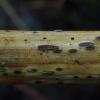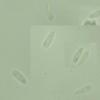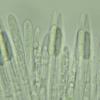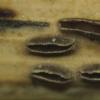
17-11-2025 19:14
herman lambertApothécie discoïde 0.6 cm diam., orangeFace hym�

16-11-2025 21:09
 Robin Isaksson
Robin Isaksson
Anyone recognize this acc. to pictures.? Found on

14-11-2025 16:26
 Marian Jagers
Marian Jagers
Hello everyone, On dead wood of Cytisus scoparius

15-11-2025 23:22
Mario FilippaHello,this is what I think to be Hymenoscyphus mac

15-11-2025 20:25
 Riet van Oosten
Riet van Oosten
Hello, Found by Laurens van der Linde, Nov. 2025

14-11-2025 18:31
 Lothar Krieglsteiner
Lothar Krieglsteiner
Hello,can somebody provide me with a file of:Rothe

12-11-2025 09:25
 Viktorie Halasu
Viktorie Halasu
Hello, I need help with a pale terrestric Pseudom

11-11-2025 20:16
Bohan JiaHi, lastly I have found these tiny yellow decayin
Erumpent on Phragmites australis
Juuso Äikäs,
06-06-2020 20:25
Spore dimensions:
(6.5) 6.6 - 7.2 (7.3) × 2.1 - 2.4 (2.5) µm
Q = (2.8) 3 - 3.2 (3.3) ; N = 8
Me = 6.9 × 2.2 µm ; Qe = 3.1
Juuso Äikäs,
07-06-2020 13:54
Re : Erumpent on Phragmites australis
I managed to find one rather promising candidate: Hysterostegiella valvata.
http://www.centrodeestudiosmicologicosasturianos.org/?p=23617
In that source the substrate is apparently Ammophila arenaria, so Poaceae as well. Paraphyses look just right and spore size and appearance is also pretty much the same.
http://www.centrodeestudiosmicologicosasturianos.org/?p=23617
In that source the substrate is apparently Ammophila arenaria, so Poaceae as well. Paraphyses look just right and spore size and appearance is also pretty much the same.
Juuso Äikäs,
07-06-2020 15:32
Re : Erumpent on Phragmites australis
I have to clarify that in the first pic I think at least a part of those are actually Lophodermiums or something like that. I re-examined the sample and they had filiform spores. Both species are growing on the same culm near eachother. Here's a pic that I think is of the possible H. valvata:



